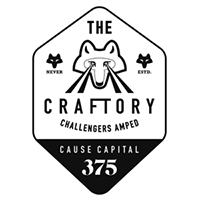The $1Bn Bedtime Stories
Why chewing the fat is the Ad Man’s Kryptonite
It all used to be so beautifully easy. The Venerable P&G Rule Book for Effective Advertising codified the perfect 30-second ad in 5 easy steps: (1) set up a relatable context – cue woman-next-door in wholesome nest, (2) define the problem statement – children’s lifetime of happiness in ruins over vexing mud stains on pristine cricket gear, (3) offer relief – behold! it washes whiter!, (4) back up with evidence – confusing but strangely credible-looking animation of miraculous washing molecules, and (5) end with a close-up of the pack to a happy jingle – the ad-man’s money shot. Then lavish a few score $million a year on driving home the message ad nauseam across the airwaves, and – presto – a new “Billion-Dollar-Braaand” would be added to the FMCG pantheon.
It worked brilliantly for decades, with legions of bright-faced MBA types perfecting the nuance of Jingles, Claims and Evidence with ever greater dash. It also created a frontline of virtually unassailable consumer brands that no-one could outspend, shared between a narrow oligopoly of consumer giants. However, to whoops of delight by many, that’s all gone now – with ever more Ad-Dollar-Goliaths felled every day by Humble-Conversation-Davids.
Modern challenger brands aren’t built on the back of interruptive advertising. That’s because the new generation of connected consumers they target actively ignore it – and don’t believe any of its claims when forced to endure it. And it’s not just a question of media (which is what many traditional brand managers mistake the shift for): no matter how much P&G and L’Oréal spend on YouTube, Instagram or Facebook, the effect is the same. Connected consumers ignore them. That’s led some of the FMCG giants to “rethink” their marketing strategies, and “re-focus” on TV (witness P&G pulling out of a whopping $200M of digital ad spend for 2018). However they’re missing the point: the issue isn’t that digital is ineffective. The problem is that the conventional ad model is obsolete, and simply transplanting it from TV to digital achieves the square root of nothing.
Challenger brands, instead, are built on the back of storytelling. Their brand equity doesn’t derive from dollars spent shoring up Claims and Evidence, but by moving right into the heart of conversation itself: offering up signalling values and experiences that consumers actively appropriate for themselves.
Examples abound in every category: Take Seedlip, a hyper-growth non-alcoholic Gin distiller (go figure): for them it’s all tales about the tattooed, bearded founder who concocts herbal elixirs in his barn to long-forgotten apothecary’s recipes. Or consider Lola’s pure organic cotton tampons, with the open war they’ve declared on the toxic chemicals and plastics found in Big-Business brands. Time and again, successful challengers win because they focus on fuelling the conversation: by standing for values and telling stories insubordinate and extraordinary that consumers adopt and readily share. And if you think storytelling is niche, you’d be surprised: Fever-Tree has become a £2bn market cap drinks business on the back of stories about its founders travelling into the Deepest Congo to source the world’s best quinine, and Halo Top turned down a $2bn acquisition offer from Unilever for its tearaway brand of Instagram-shareable and miraculously guilt-free ice cream pints.
So take pity on the poor Ad Men. Their whole way of life has just been thrown out the window. And rejoice the fireside chat – because that’s where the Billion Dollar Brands of Tomorrow are being built.
With no advertising in sight.
Ernesto Schmitt is co-founder at The Craftory, the brand-new counter-corporate anti-VC on a $300M mission to back the world's boldest insurgent challenger brands in the consumer goods space.


